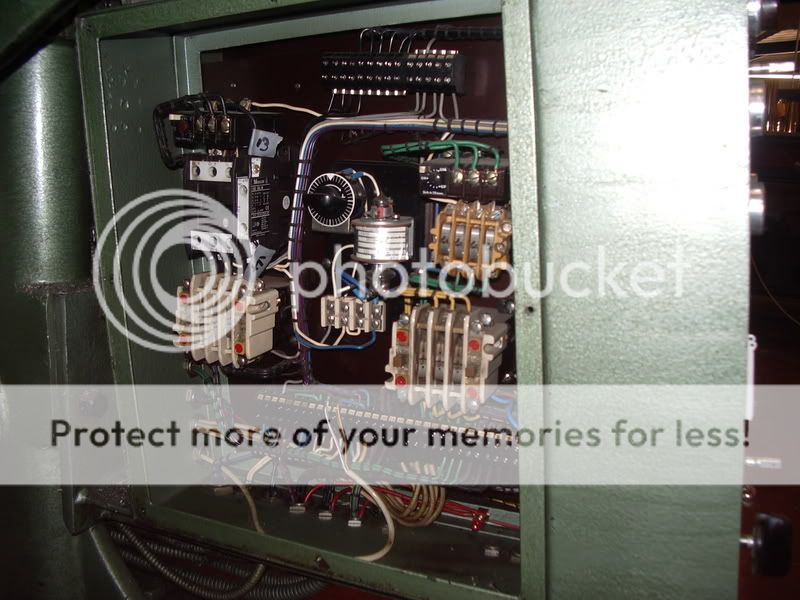I was working on a TP machine in a commercial printers today, and in the control panel I was greeted by a strange component.

It appears to be some sort of solenoid, and where the two blue wires connect to it there is mercury.
The solonoid is pulled up (breaking the contact) when the motor is switched on.
It is quite an old machine, but not too old for contactors.
Why would this be fitted instead of a contactor or relay?
This is the whole control pannel


It appears to be some sort of solenoid, and where the two blue wires connect to it there is mercury.
The solonoid is pulled up (breaking the contact) when the motor is switched on.
It is quite an old machine, but not too old for contactors.
Why would this be fitted instead of a contactor or relay?
This is the whole control pannel






